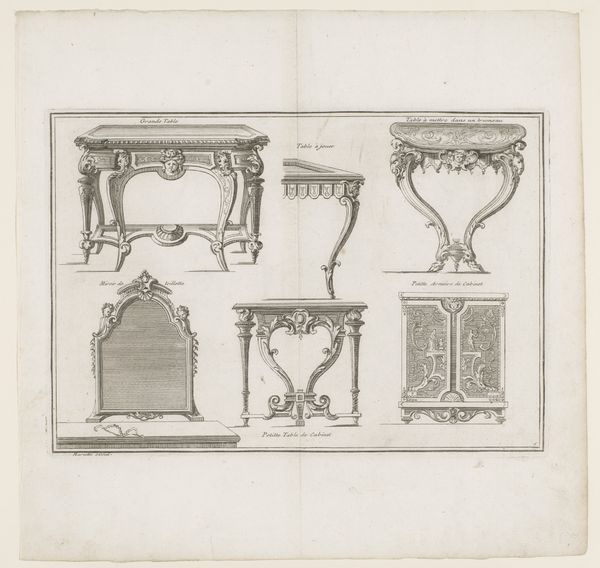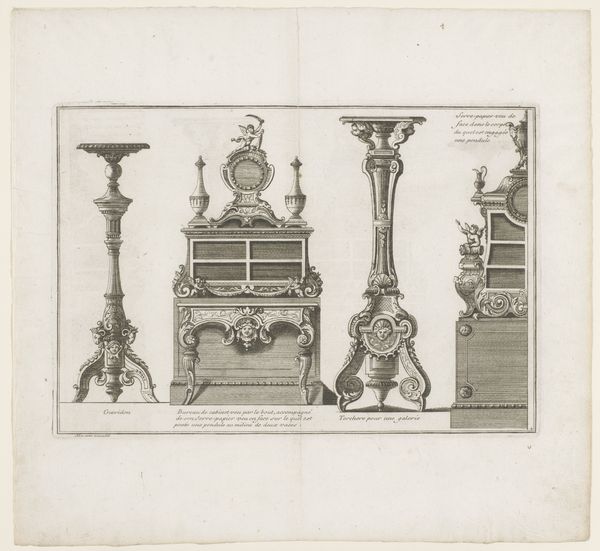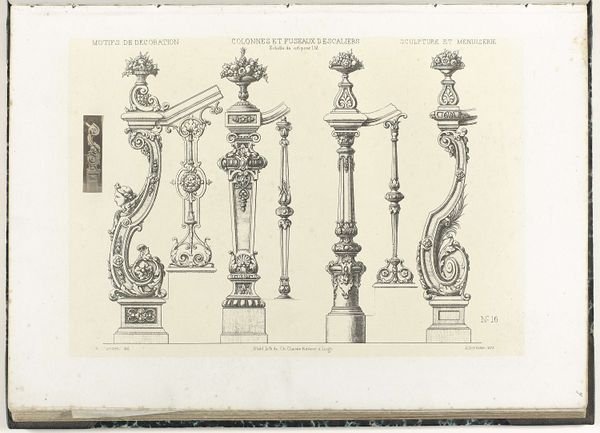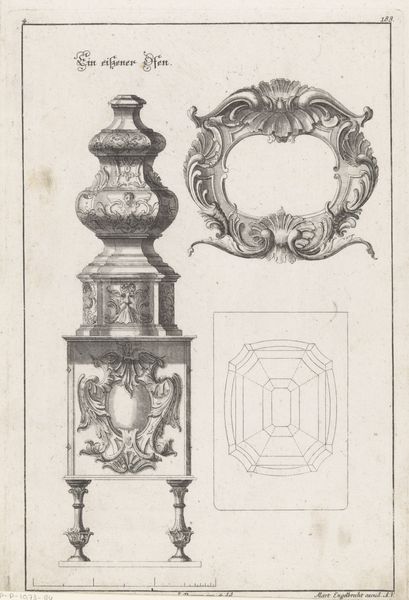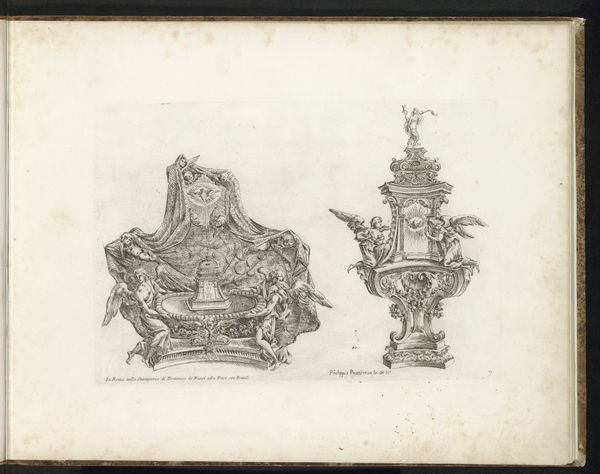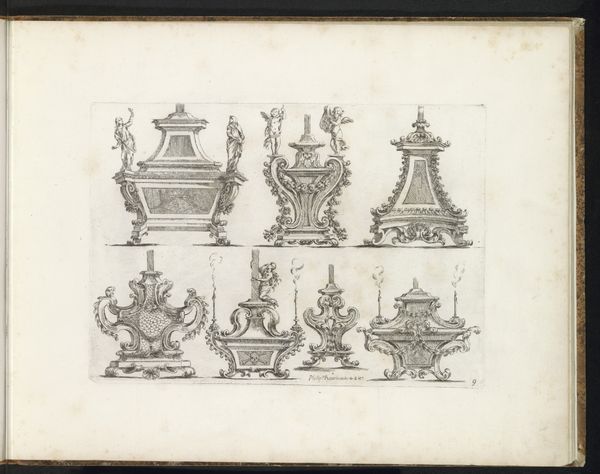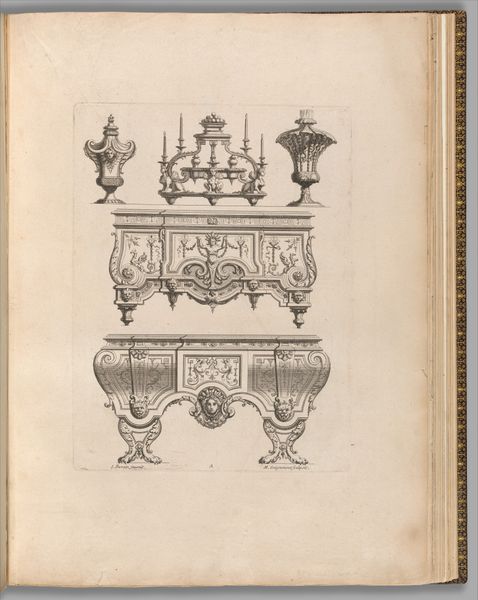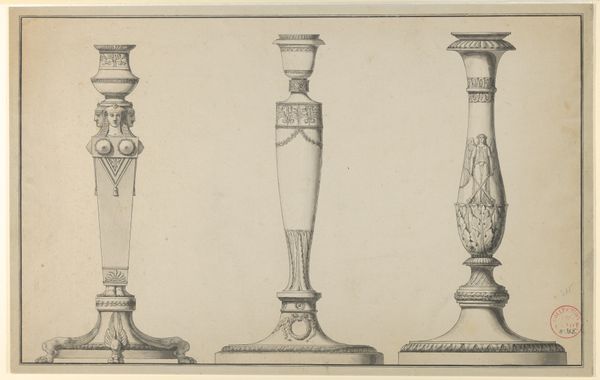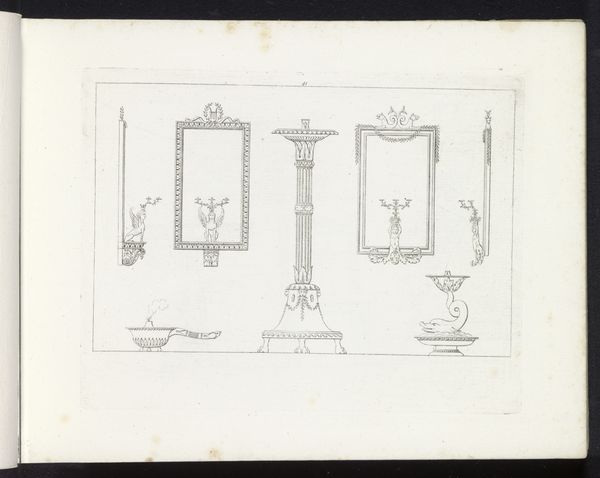
drawing, ornament, metal, sculpture, engraving
#
drawing
#
ornament
#
baroque
#
metal
#
sculpture
#
engraving
Dimensions: height 209 mm, width 312 mm
Copyright: Rijks Museum: Open Domain
Curator: This engraving presents us with an array of clock designs—"Vier pendules en twee bronzen"—along with bronze elements, crafted around 1710 to 1720 by André Charles Boulle. Note the intricate details rendered with metalworking techniques and skillful draftsmanship, very characteristic of the Baroque style. Editor: My first impression is how visually rich this single page is. It’s dense but incredibly graceful, a catalogue almost… a kind of desire machine! Each potential clock becomes a portal, framed within an aspirational lifestyle, signaling wealth and, of course, the control of time itself. Curator: Precisely. Boulle was the leading cabinetmaker under Louis XIV, a pivotal figure whose style essentially defined an era. These clock designs weren't merely functional; they symbolized power, luxury, and the rigid courtly structure. Clocks, placed in specific settings within interiors, served as performative, yet essential elements in baroque life. Editor: Absolutely. The representation of time itself becomes politicized through ornamental extravagance. This relates, too, to notions of “productivity” that became associated with the period: these are clocks explicitly meant for the upper classes to witness, while those beneath them would labor for their schedules. We can really interrogate the role of ornamentation as a visual tool of hierarchy. The "performance" aspect makes me think, what did these clocks really mean to the laboring people outside palace doors? Curator: A very poignant perspective. It compels us to question not only the aesthetic beauty of these clocks, but also their social significance—the politics they embody and perpetuate within the society of their time. Boulle’s engravings, designed for dissemination, served to extend his aesthetic vision far beyond the palace walls. Editor: So, it becomes clear the real art here isn't merely decoration or clockmaking but propagating classist desires as art... an agenda to further cement societal power by controlling something abstract, like Time itself. Curator: Exactly. Reflecting on "Vier pendules en twee bronzen," we realize that artistic choices always exist within systems of meaning, impacting societal frameworks of identity and, critically, their representation across periods of History. Editor: In that light, viewing them collectively helps one not only view history, but challenge its assumptions, using them as mirrors to look through eras, critiquing the way aesthetics influenced lives and even structured power.
Comments
No comments
Be the first to comment and join the conversation on the ultimate creative platform.

